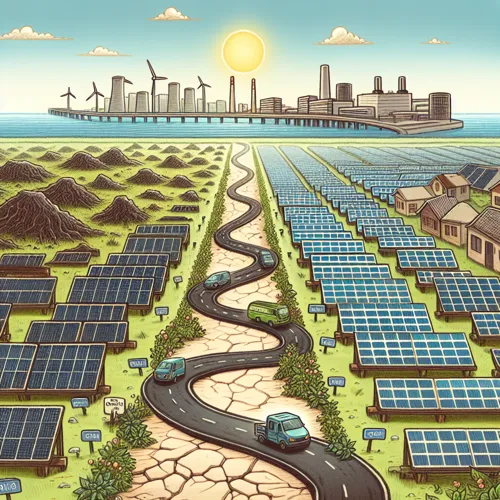Introduction: The Promise of Solar Energy
The rapid global adoption of solar energy is revolutionizing our reliance on non-renewable energy sources. As technology advances and costs decrease, achieving grid parity - a state where solar power generation is as economically competitive as fossil fuels - has become increasingly feasible. This post will explore the steps we are taking toward this transformative milestone and what it means for our planet’s future.
Topic 1: Technological Innovations Fueling Progress
To reach grid parity, we must continue developing and deploying high-efficiency solar cells. Perovskite materials, thinner solar panels, and novel concentrator technologies promise to unlock greater energy densities while cutting production costs. In recent years, there have been impressive breakthroughs in photovoltaic efficiency, such as the 29.6% efficiency milestone achieved by a team at the University of New South Wales in Australia.
Topic 2: Scaling Up Solar Farm Development
One critical factor in achieving grid parity is the expansion of utility-scale solar farms. By taking advantage of economies of scale, large projects can bring down solar energy’s levelized cost of electricity (LCOE), making it an increasingly attractive option compared to traditional fossil fuels. Global investments in solar capacity have been on a steady rise, and experts predict that the cumulative installed solar PV capacity will reach 1,245 gigawatts by 2030.
Topic 3: The Rising Importance of Energy Storage Systems
Pairing large-scale solar installations with advanced energy storage systems is essential for maximizing grid integration efficiency. Batteries like lithium-ion and flow batteries allow excess power generated during the day to be stored for later use, providing a buffer against intermittent sunlight and peak demand fluctuations. Advances in energy storage technologies have helped improve overall grid stability and reliability while lowering costs.
Topic 4: The Influence of Policies and Governmental Initiatives
Governments worldwide are implementing policies and incentives to support solar adoption, such as tax credits, net metering programs, and renewable portfolio standards (RPS). These initiatives promote the growth of the clean energy sector and encourage the rapid deployment of solar technologies. A supportive regulatory environment is vital in driving down costs and achieving grid parity faster than previously anticipated.
Topic 5: The Role of Consumers and Corporate Adoption
The demand for sustainable energy has never been greater, with an increasing number of homeowners and businesses investing in rooftop solar systems or purchasing renewable energy certificates (RECs). The mass adoption of solar power by both individuals and corporations will play a significant part in driving grid parity. As more consumers opt for cleaner energy options, we can expect to see even greater strides towards achieving this goal.
In conclusion, the journey toward grid parity is fueled by a combination of technological advancements, policy support, increased consumer demand, and corporate investments in solar technology. By continuing to foster an environment conducive to clean energy development, we will eventually realize the true potential of solar energy as an economically viable and sustainable solution for our planet’s future
